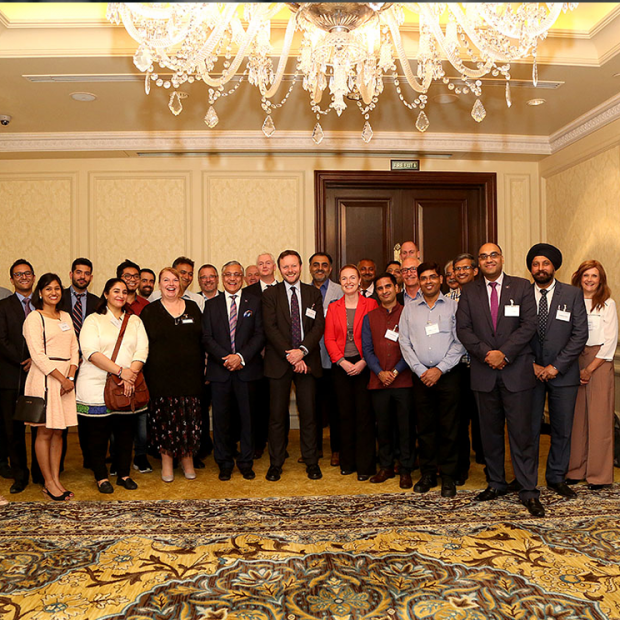Artist impression of the ASTRO-H observatory Credit Akihiro Ikeshita and JAXA
A Southampton researcher is part of an international team that will be using the first observations from the JAXA (Japan Aerospace Exploration Agency) and NASA X-ray space telescope ASTRO-H, set to launch from Japan on 17 February, to shed light on how black holes evolve.
Dr Poshak Gandhi, Associate Professor and Science and Technology Facilities Council (STFC) Ernest Rutherford Fellow in the University’s Astronomy Group, studies the growth of supermassive black holes at the centres of galaxies near to ours. Most of these black holes are veiled behind thick interstellar gas and dust clouds, and using X-ray observations is the only way researchers can directly study many of them. ASTRO-H will enable better X-ray spectroscopy of black holes than ever before.
“Black holes were first identified in space over 40 years ago, but we are still far from understanding how they grow and evolve. The high-precision ‘X-ray colour vision’ of ASTRO-H will be a huge step forward for such studies, and for understanding other hot and extreme objects in the universe,” says Poshak.
“This new space telescope represents the culmination of decades of research and development into space X-ray detector technologies led by Japan, but the scientific challenges that ASTRO-H will tackle require the combined expertise of astronomers the world over. I am very excited to be part of this international collaborative effort, and look forward to solving mysteries that have long puzzled us,” he adds.
For more information on Poshak’s research, visit his website
To find out more about ASTRO-H and view a video click here



